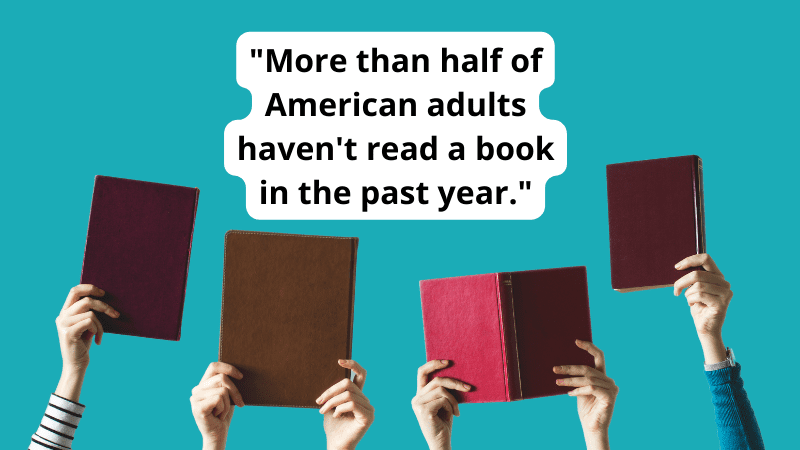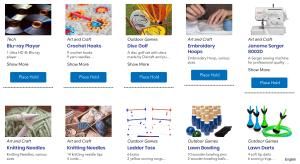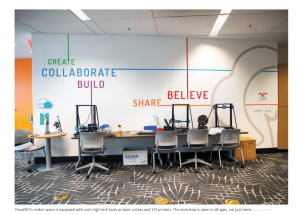
When I think of a library, I envision a space filled with books and materials to borrow. It’s no secret that the library landscape has changed and continues to evolve rapidly due to COVID-19, budget cuts, new technology, and an increasingly diverse community. 49% of adults report reading one book in the past year, and AI is making rapid advancements (Iyendar, 2024, and U.S. Government Accountability Office, 2023). Libraries across the country and the world have adapted to these changes through the creation of Maker Spaces that offer 3-D Printers, sewing machines, Cricuts, a Soldering Iron, Recording Studios, and more (Allen County Public Library, 2025). In addition, the material collection has grown to include e-books and movies, kitchen utensils, instruments, and yard games (Allen County Public Library, 2025). Access to the physical and digital collections has increased with the adoption of fine-free policies (The City Library, 2018). While each of these changes has attempted to meet the needs of the community, what if that’s not enough? If the library wants to not just survive, but thrive, radical steps might need to be taken to ensure the library remains a valuable community space.

What if the focus of the public library shifts from its collection to its spaces? Dorte Skot-Hansen (2017), in “Library Development: From Collection to Connection”, outlines the Four Space Model: The inspirational space, The learning space, The meeting space, and The performative space (Skot-Hansen, 2017). These spaces offer different environments that include a recording studio, community classes and lectures, a meeting space for the public to use, and access to a collection for learning and inspiration. The Spokane Public Library has tried to put this into practice through The Hive (The Spokane Public Library, n.d.-a). The Hive is a library building with no books. It offers public meeting and study spaces, studios with art and technology equipment, as well as studios that house in-resident artists. These artists stay for a period of time, from one month to six months, with the agreement to teach community programs based on their art skills (The Spokane Public Library, n.d.-b). From painting, welding, to carving, each artist is unique in what they offer the community.
Another example of a library system that is putting the Four Space Model into action is the Memphis Public Libraries (MPL) (Grant, 2021). MPL completely flipped their libraries upside down in an attempt to reclaim their place as a valued community entity. They invested more than 1 million dollars to create a professional recording studio. MPL took old Redboxes and placed them around the city with books and materials to check out, along with information flyers. In addition, an outdoor yoga space has its own home at one of the branches, along with a cafe that will offer food and drinks. MPL also initiated a media campaign with local celebrities that framed the library as a “Start Here” place for learning, innovation, and discovery. The goal is to reshape how people view the library as just a quiet space with books.

When I zoom out and think about the library system I work for, and how we can implement the Four Space Model, I think about our tweens. We have dedicated Children’s Spaces and Teen Spaces, but none of the branches, except for the Main Branch, has a tween space. There are a handful of branches that have a large tween presence after school. They love to play Minecraft and Roblox on the computers, but there isn’t anything else for them to interact with or learn from. Grant (2021) talked about the recording studio in MPL and how the teens use that space to create music, films, and more (Grant, 2021). Our tweens would love a space where they could create their own music, movies, video games, and apps. This would allow them to still interact with the games that they love, but also cultivate creative skills and open career options for them.
I also love the idea of having an in-residence artist who would offer community classes in exchange for the space. This would provide opportunities for the artist to make new connections in the community, and for new art skills to be freely available through library programs. We have a small group of artists in my town who I can envision our library system partnering with to learn weaving, glassmaking, fiber arts, and more. What a cool way to make art accessible to everyone! This is the heart of The Four Space Model. It encourages public libraries to look beyond the collection and the traditional library services, to create an environment that is still built on learning and discovery, but with new tools.
References
Allen County Public Library. (2025-a). Library of things. https://www.acpl.lib.in.us/library-of-things
Allen County Public Library. (2025-b). The studio. https://www.acpl.lib.in.us/the-studio
The City Library. (2018, August 9). The fine free library: One year later. Medium. https://slcpl.medium.com/the-fine-free-library-one-year-later-d28c69743c15
Grant, R. (2021, November). How Memphis created the nation’s most innovative public library. Smithsonian Magazine. https://www.dropbox.com/scl/fi/3g4juvioz86g1m2uj529i/How-Memphis-Created-the-Nation-s-Most-Innovative-Public-Library-Innovation-Smithsonian-Magazine.pdf?rlkey=25yzrxk37civvks7bg6hwaafs&e=1&dl=0
Iyendar, S. (2024, October 3). Federal data on reading for pleasure: All signs show a slump. National Endowment for the Arts. https://www.arts.gov/stories/blog/2024/federal-data-reading-pleasure-all-signs-show-slump
Skot-Hansen, D. (2017, August). Library development: From collection to connection. University of Copenhagen. https://287.hyperlib.sjsu.edu/wp-content/uploads/2025/02/4-Spaces-Model-from-Univ-Copoenhagen.pdf
The Spokane Public Library. (n.d.-a). The hive. https://www.spokanelibrary.org/hive/
The Spokane Public Library. (n.d.-b) The hive: Artist-in-residence program. https://www.spokanelibrary.org/artist-residencies
U.S. Government Accountability Office. (2023, September 6). Artificial intelligence’s use and rapid growth highlight its possibilities and perils. https://www.gao.gov/blog/artificial-intelligences-use-and-rapid-growth-highlight-its-possibilities-and-perils
This is a lovely post Jenn! In thinking about our readings and the topics so far one phrase has stuck with me “engage the heart of our library visitors”. Your meditation on spaces and opportunities seems to circle closely around that idea too. 🙂